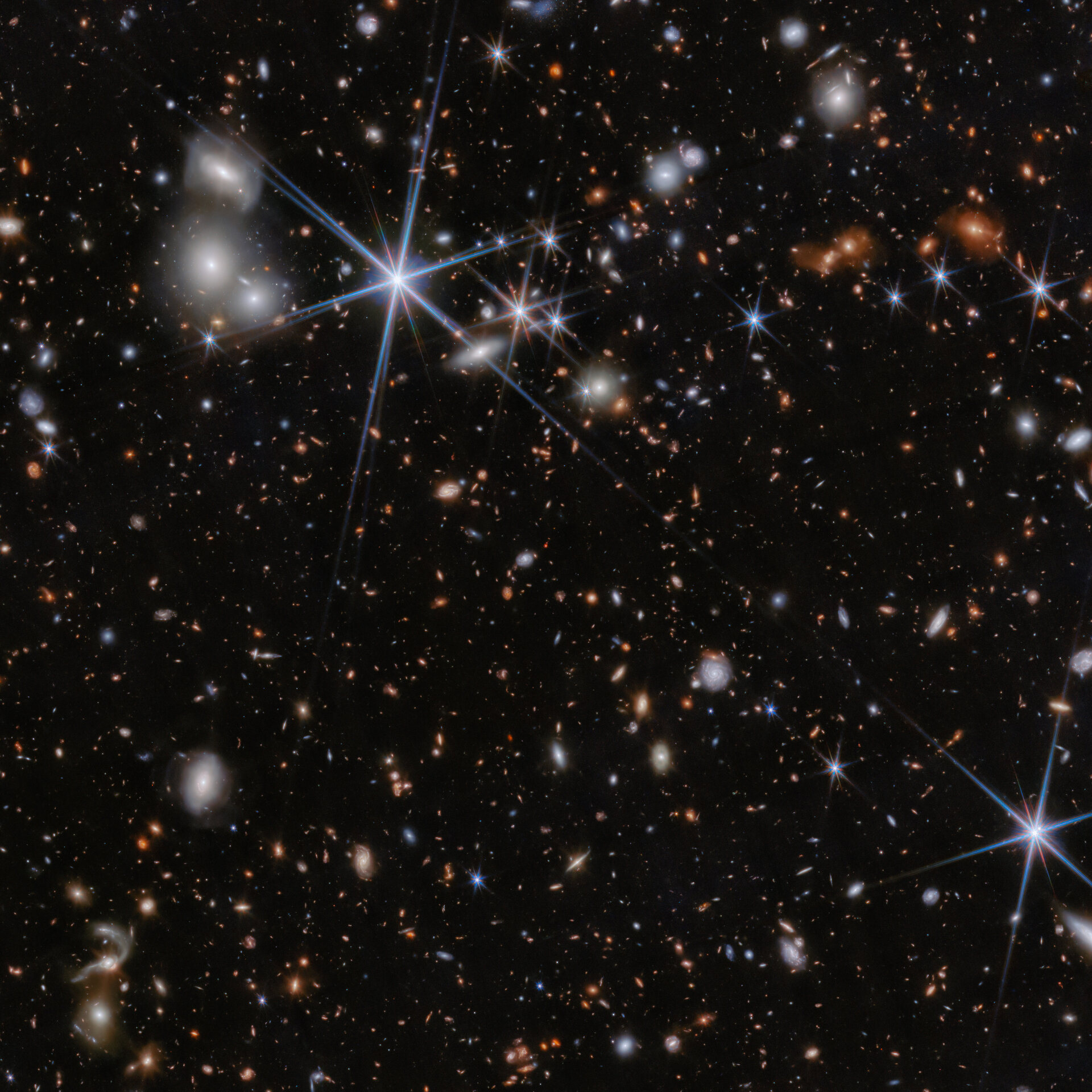Astronomers find evidence of gargantuan black holes colliding in early universe
Webb witnesses the most distant black hole merger ever seen.

Using the James Webb Space Telescope (JWST), scientists have found evidence of a titanic clash between galaxies and their supermassive black holes. This incredible discovery, detailed in a new study, marks the farthest detection of a black hole merger ever observed, dating back a staggering 740 million years after the Big Bang.
Astronomers have long been perplexed by the origins of supermassive black holes - celestial beasts millions to billions of times more massive than our sun. These gargantuan cosmic objects lurk at the heart of most large galaxies, including our Milky Way, and are believed to play a crucial role in their evolution.
However, the question of how these black holes grew so immense in the early universe has remained unanswered.
The new Webb observations have provided evidence for an ongoing merger in a system known as ZS7. The analysis revealed one of the black holes in this system boasts a mass 50 million times that of our sun. As these two behemoths merge, they will eventually create an even more monstrous black hole, forever altering the landscape of the surrounding galaxies.
According to the researchers, this colossal event will generate gravitational waves - invisible ripples in the fabric of spacetime - which can be detected using future observatories like the Laser Interferometer Space Antenna (LISA) - the first space-based observatory dedicated to studying gravitational waves.
"We found evidence for very dense gas with fast motions in the vicinity of the black hole, as well as hot and highly ionised gas illuminated by the energetic radiation typically produced by black holes in their accretion episodes. Thanks to the unprecedented sharpness of its imaging capabilities, Webb also allowed our team to spatially separate the two black holes," explained lead author Hannah Übler of the University of Cambridge in the United Kingdom.
🎶A supermassive black hole...Astronomers have used the NASA/ESA/CSA James Webb Space Telescope to find evidence of the most distant detection of black holes merging together.Never before has this phenomenon been detected so early in the Universe, shedding new light on how… pic.twitter.com/3ScHppYtFv
— European Space Agency (@esa) May 16, 2024










